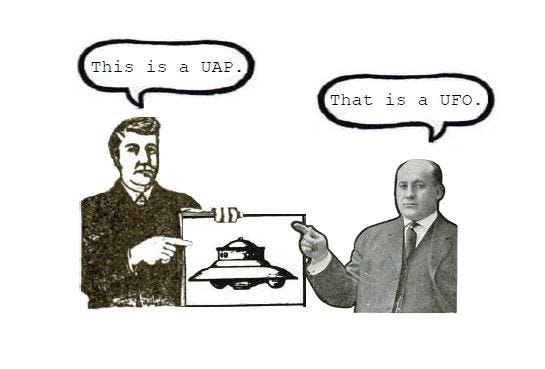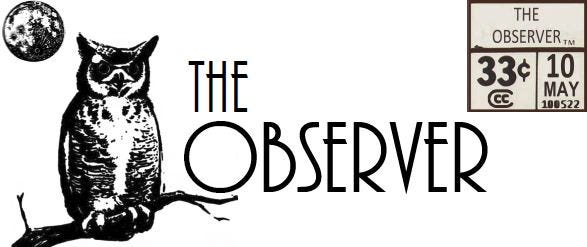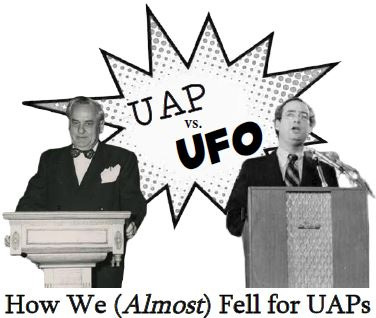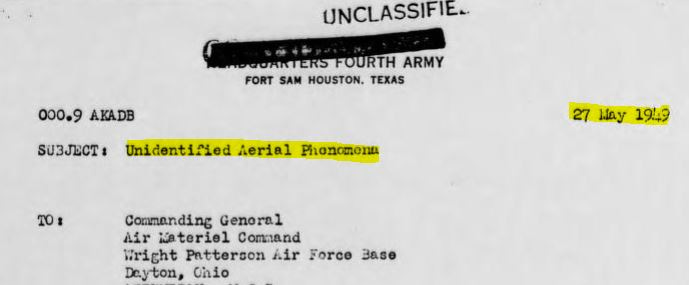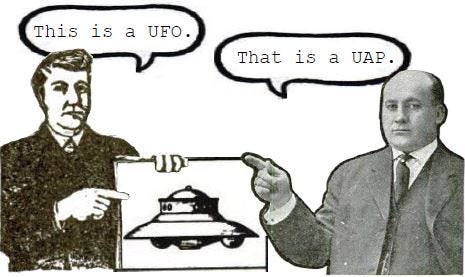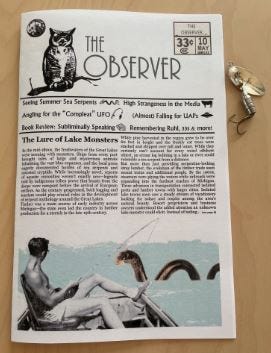Saucer Semantics
Critics complain that the letters ‘U-F-O’ are worn-out from carrying decades of “heavy cultural baggage.” Its affiliation with extraterrestrials has sullied its reputation. This class of acronym-abdicators are convinced that the “antiquated term” is so tarnished that it’s no longer in any condition to serve as the headliner for a topic locked in an eternal struggle for acceptance.
By contrast, ‘U-A-P’ has an official ring to it. It lends itself to a crisp, snappy pronunciation that leaps off the tongue—more militaristic and orderly than its boorish, sloppy-sounding counterpart. Finally, an abbreviation with some cachet! One that both professionals and interested hobbyists can use in front of friends and family without sounding like a ‘flying saucer nut.’ Discussing “aerial phenomena” at a dinner party elicits solemn nods and intellectual conjectures, not skeptical glances and sarcastic remarks.
Here’s why he’s wrong.
For their part, UAPers harrumph about the bias inherent in the word ‘Object’—seeing it as a limiting factor that omits “ethereal possibilities” or other non-physical manifestations.
While we very well could be dealing with a paranormal enigma, the point isn’t settled at the moment. Supplanting the word ‘Object’ in favor of ‘Phenomenon’ simply prioritizes the metaphysical over the material in the audience’s mind, creating the same verbal conundrum that UAP-backers were trying to avoid.
Detractors quibble about using ‘Object’ to classify things like holographic projections, lasers, or plasmas. In Rainer’s opinion, if the ‘thing’ isn’t “solid,” or doesn’t have “physical mass,” then it isn’t an object.
While not ‘objects’ in the traditional sense, their status as a ‘thing’—a noun that people can wrap their heads around—is on par with the way we think about the light emitted from a light bulb. We can’t touch or feel it, but it’s very real and perceived objectively as an ‘item’ by the observer.
“It provides the basic descriptor for the sightings/observations of unauthorized/unidentified aircraft/objects that have been observed entering/ operating in the airspace of various military-controlled training ranges.”
If you can convince a UAP-advocate to drop the thesaurus and come clean about their motivation, most will admit that they’re trying to hide from a legacy.
Rainer and his ilk insist that “UFO has become synonymous with other-worldly spacecraft” causing “confusion and controversy.” Therein lies the key to the nomenclature change. Deserters like Rainer charge that continued use of UFO parlance “sets up a narrow and inflexible framework for honest scientific research.”
Tell that to professor Avi Loeb, director of Harvard’s Astronomy department and head of The Galileo Project, a venture designed to search the skies “for physical objects… associated with extraterrestrial technological equipment.” Loeb hasn’t limited his language to just “UAP” in order to secure credibility—the astrophysicist often uses the phrase “UFOs” when promoting his venture in the media.
In their rush to abandon ship, the UAP-brigade foolishly believes that the “cultural connotations of UFO” outweigh any “cultural staying power.”
A cowardly “fear of ridicule” and a disdain for the term’s reputation doesn’t justify its redefinition. What it needs is rehab, not a rewrite.
Confusingly, Rainer’s paper reveals an inconsistency that can’t be ignored. He supports keeping the letters ‘u-f-o’ around in lowercase form to serve as a catch-all for “Fortean” encounters displaying elements of high strangeness. This proposition further dilutes the potential objective reality of anything labeled a “UFO.” To make matters worse, Rainer suggests pronouncing it “you foe”—hardly an endearing nickname.
It appears he doesn’t mind if the stigma associated with those three letters is applied to cases he deems paranormal.
Is “UFO” perfect? No. Is it better than “UAP”? Yes. When it comes to defining unknown things seen in the sky, terminology is extremely important. Selecting words to summarize that which we don’t fully understand is a challenging assignment. Reducing odd visuals in the sky to a mere three words is bound to create an oversimplification. Knowing this, it’s fair to call the vernacular’s clarity into question.
The problem with “UAP” is that it eschews the possibility of hardware in favor of an event detected by the senses. It undermines the impression of a physical object. It surrenders a perfectly good acronym, gives up undeserved ground to the skeptics and non-believers, and validates decades of ridicule directed at UFOs.
